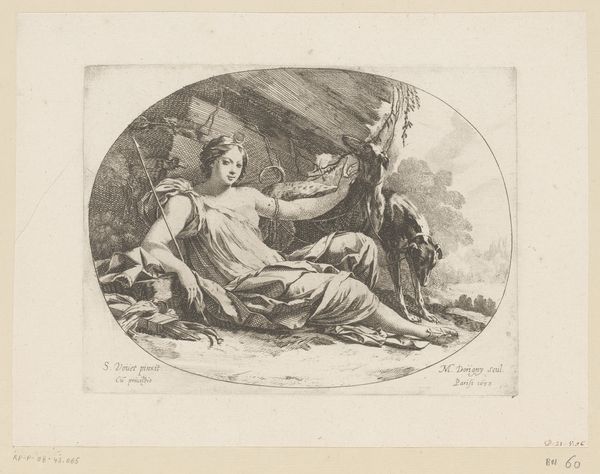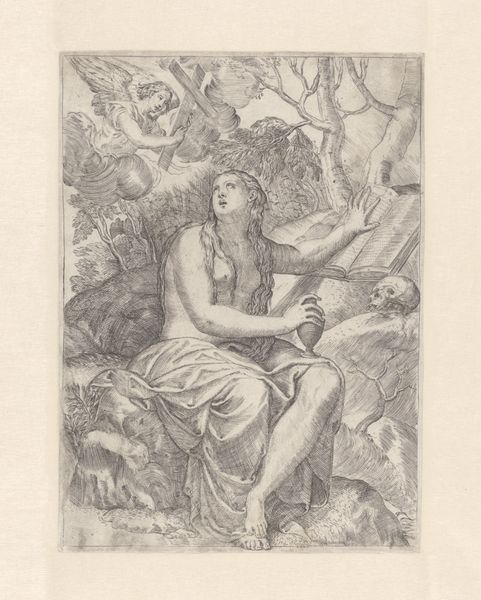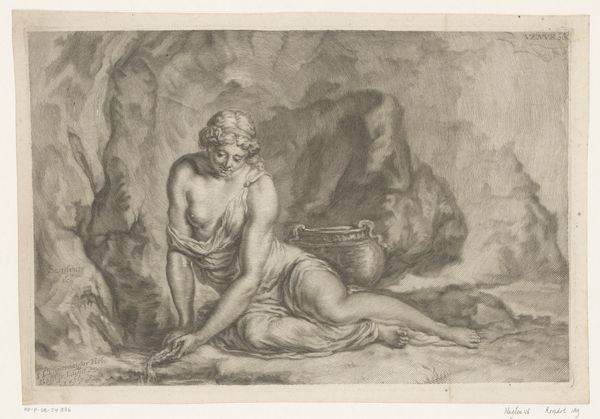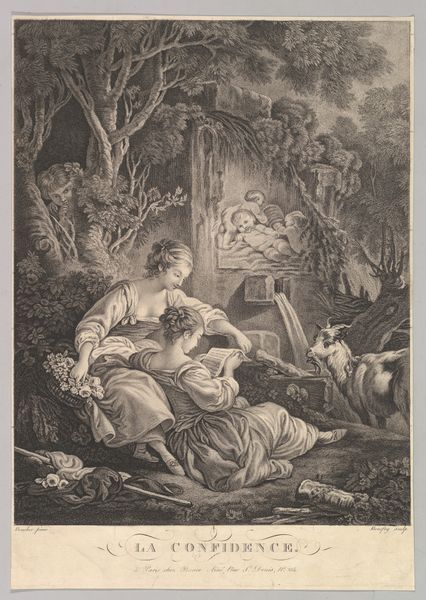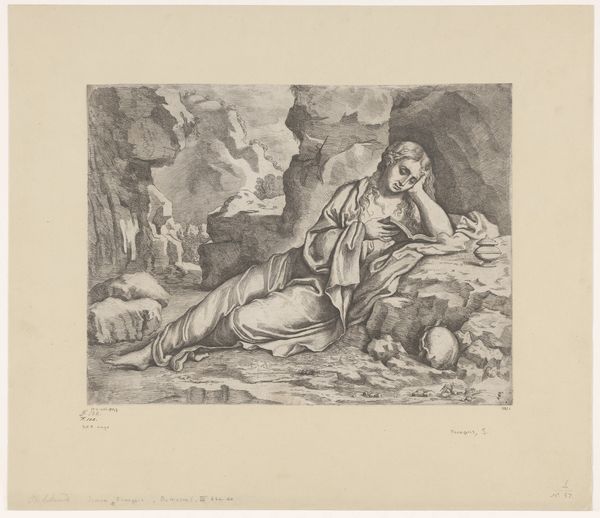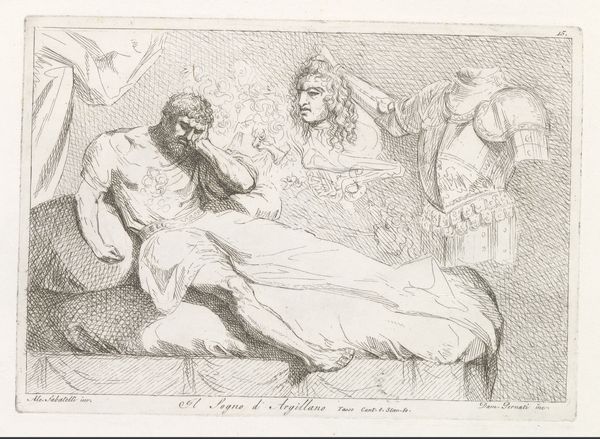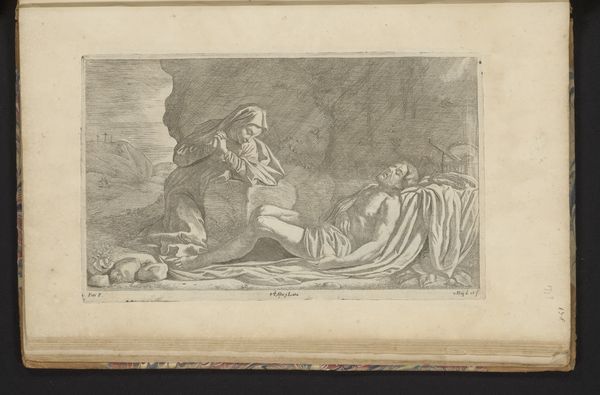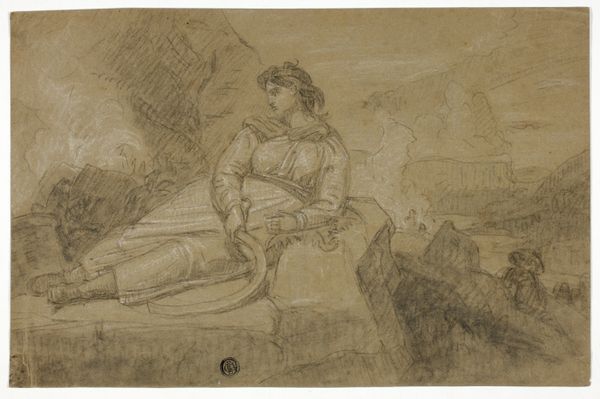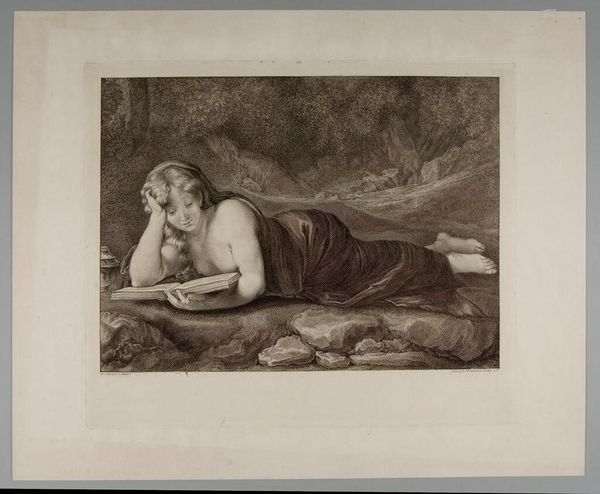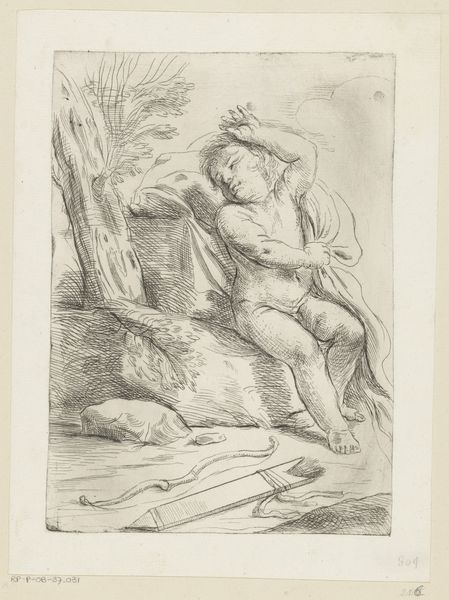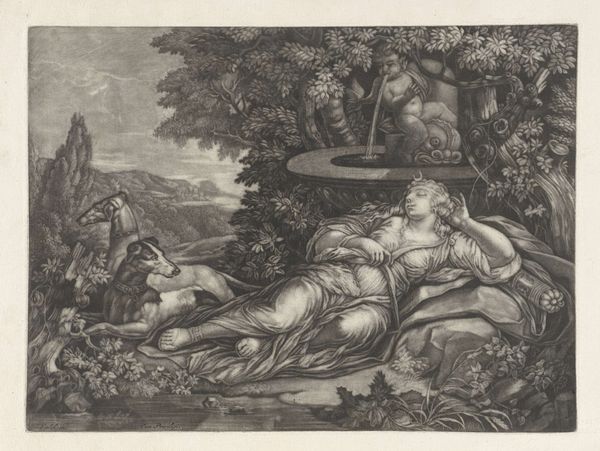
drawing, print, etching
#
drawing
#
allegory
#
baroque
# print
#
etching
#
charcoal drawing
#
figuration
#
vanitas
#
line
#
history-painting
#
nude
Dimensions: sheet: 7 5/16 x 8 13/16 in. (18.6 x 22.4 cm)
Copyright: Public Domain
Curator: Isn't this print just hauntingly beautiful? There's a strange serenity to it despite all the somber symbols. Editor: You're drawn to its peace? All I see is profound melancholy. This "St. Mary Magdalen Reclining in a Grotto," etched by Claude Mellan sometime between 1600 and 1680, screams *vanitas* with its skull and desolate grotto. It's almost melodramatic. Curator: But isn't that melodrama the point? Mellan has this incredible ability to wring emotion out of a single line. It’s all etching, creating such subtle gradations of light and shadow. Her pose, so languid, seems to question what worldly pleasure amounts to... just emptiness? Editor: Indeed, the single line technique is part of the image's public appeal, or performance even. These kinds of prints circulated widely, bringing religious and allegorical subjects into domestic spaces. But her nakedness...it’s staged, an accepted trope by then. Mary Magdalene was often sexualized—a beautiful sinner—even as she represents penitence. The church was selling repentance through very loaded imagery. Curator: Hmm, but maybe her state of undress is just vulnerability? She's stripped bare of her earthly trappings. It goes well with the starkness of her surroundings. The single line contributes too, this kind of purity of form reflecting a soul laid bare. Editor: Fair enough, it definitely evokes reflection, perhaps intentionally obscuring any strict interpretation. Though Mellan, while a brilliant technician, was also deeply embedded within artistic and religious currents. So whether intentional or not, he perpetuated particular social ideas around female sanctity and atonement. Curator: That’s interesting, and quite possibly right. To me, it’s also that starkness of presentation which feels enduring and touching. As an artist, the sheer economy of line gets to me every time I see this image. Editor: And for me, I suppose, the image demonstrates art's historic balancing act—the tightrope walk between pure aesthetic and raw cultural projection. It makes it all the more powerful, don’t you think?
Comments
No comments
Be the first to comment and join the conversation on the ultimate creative platform.

